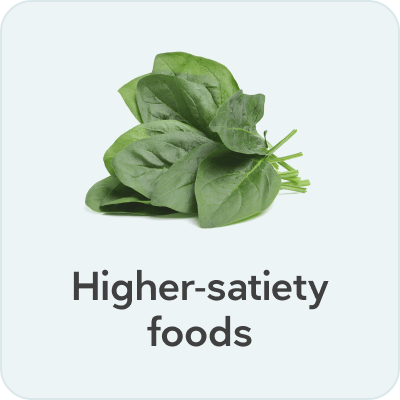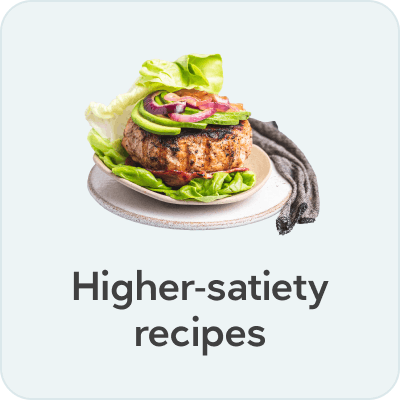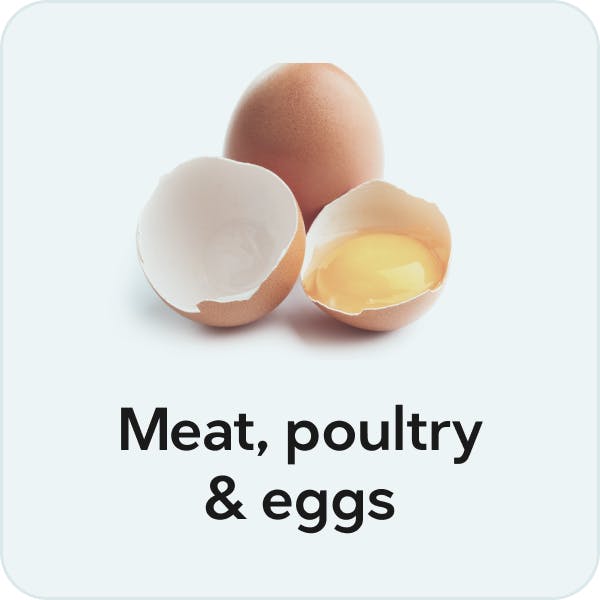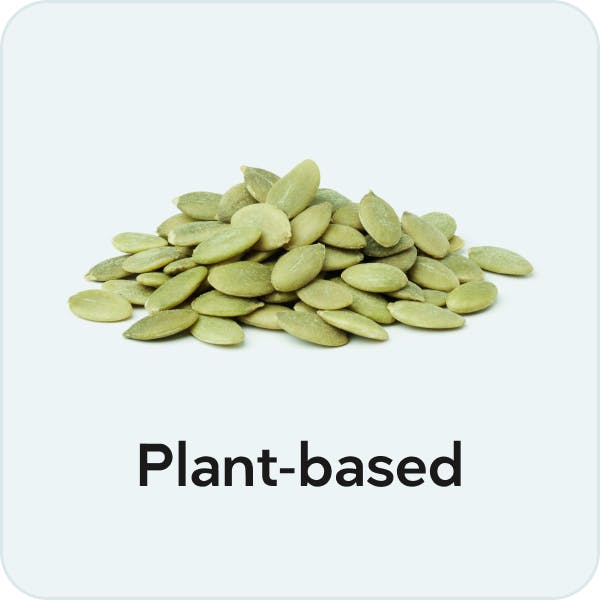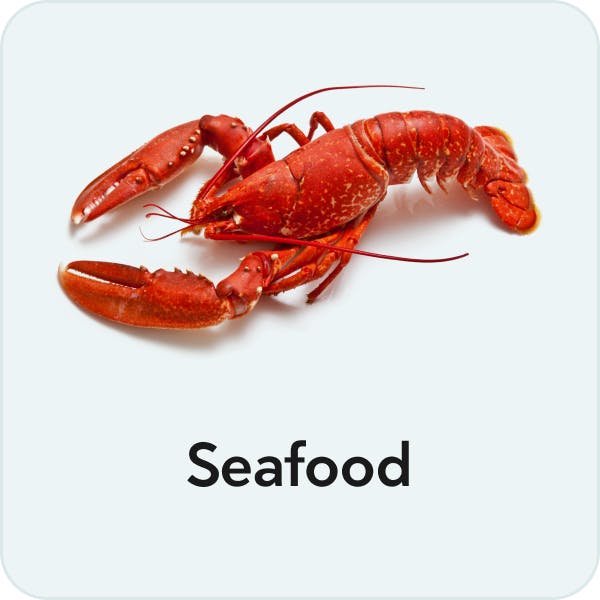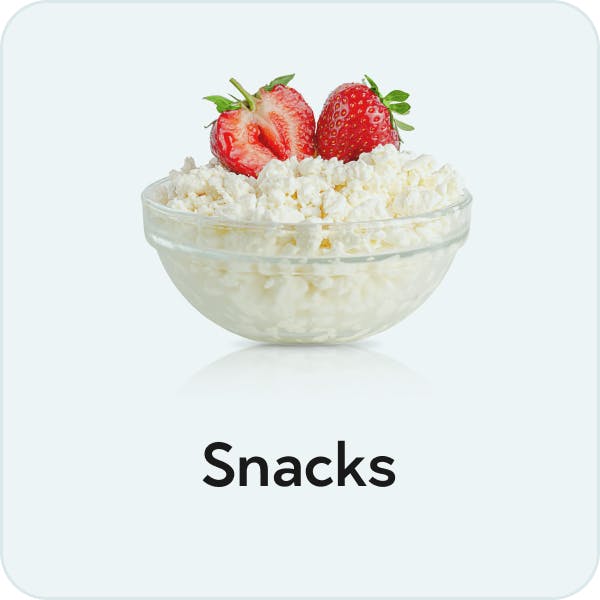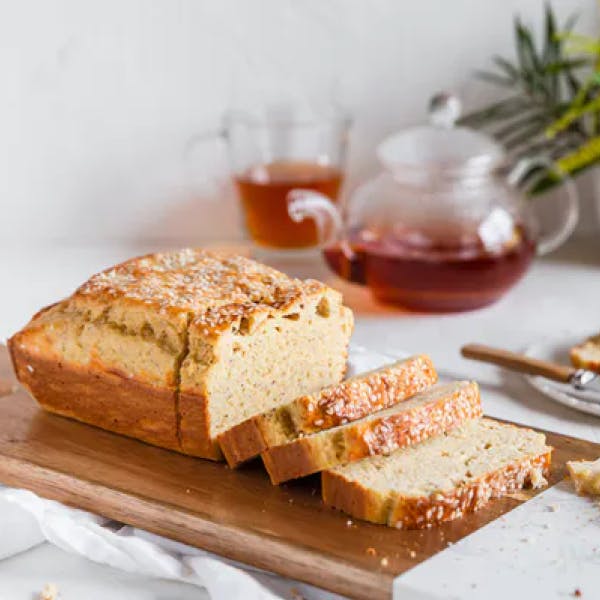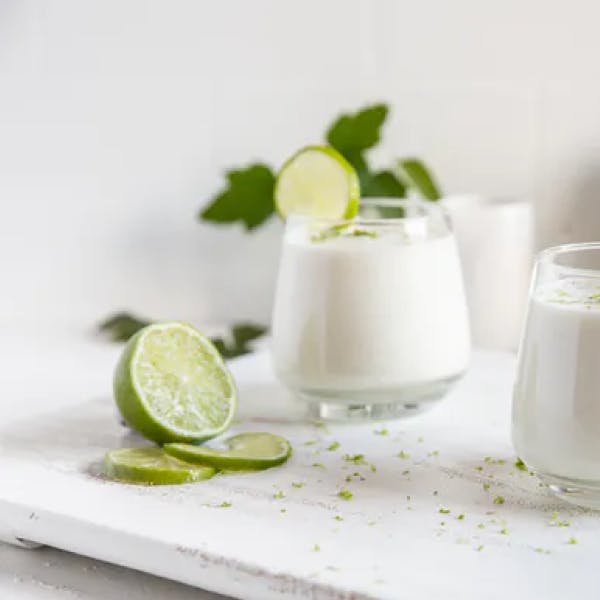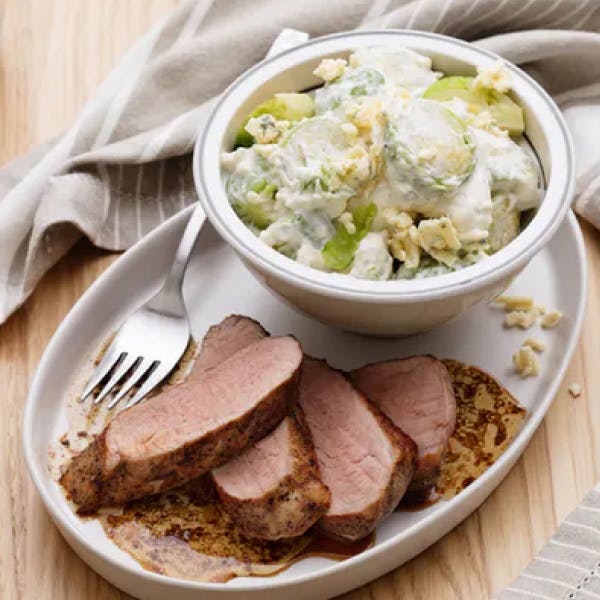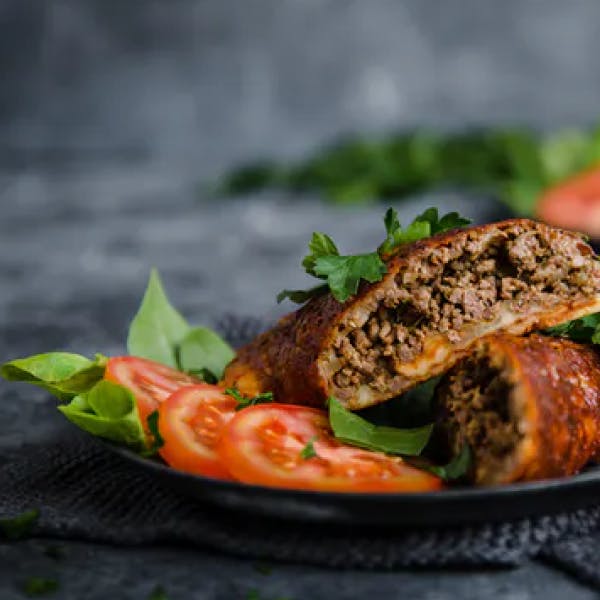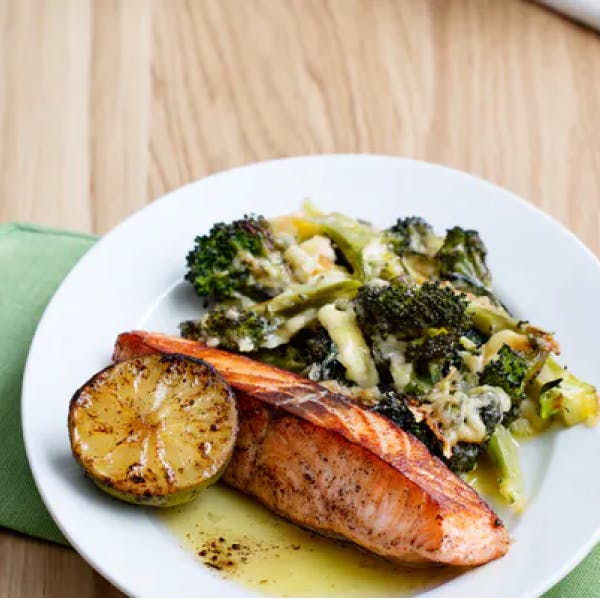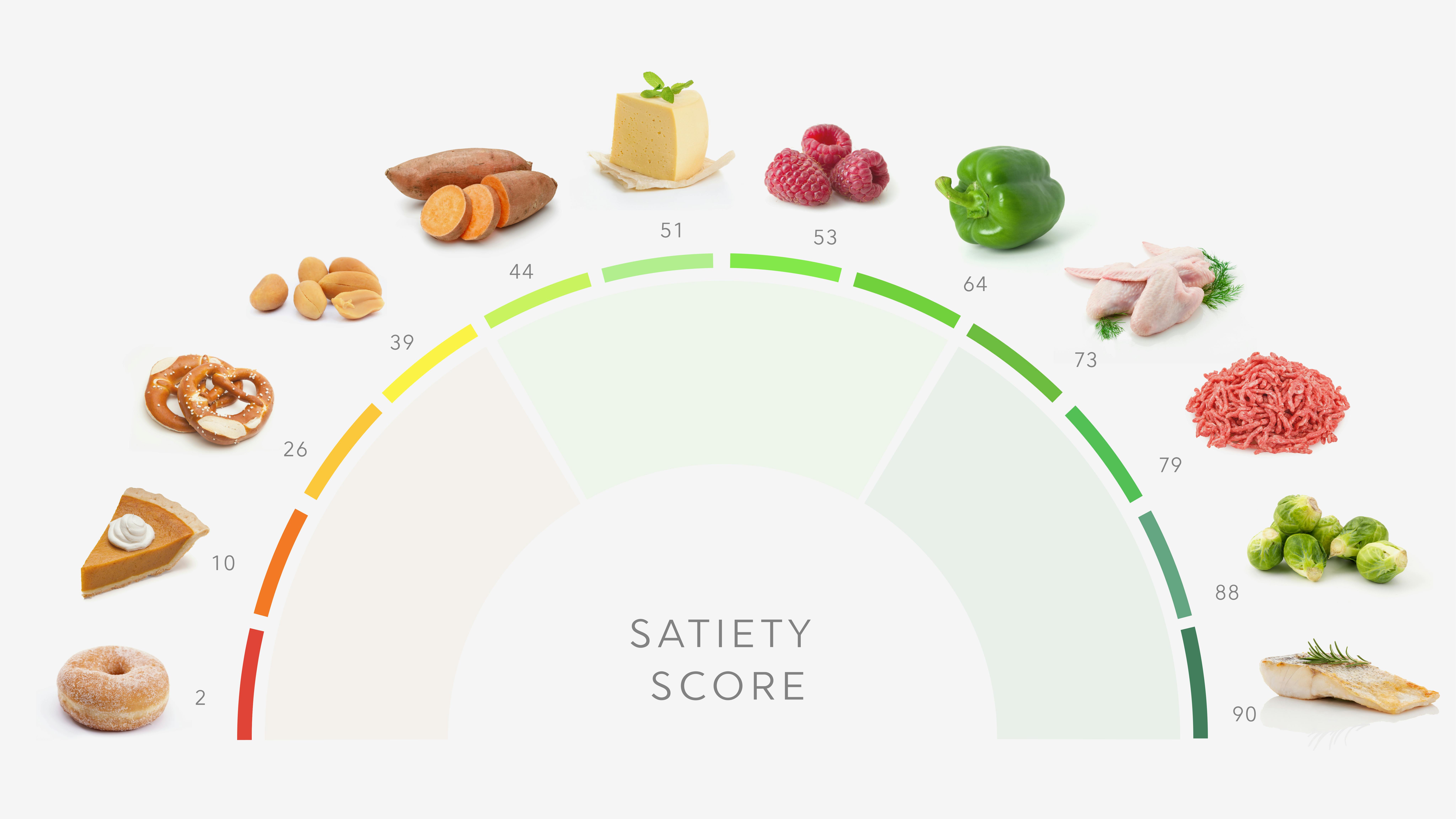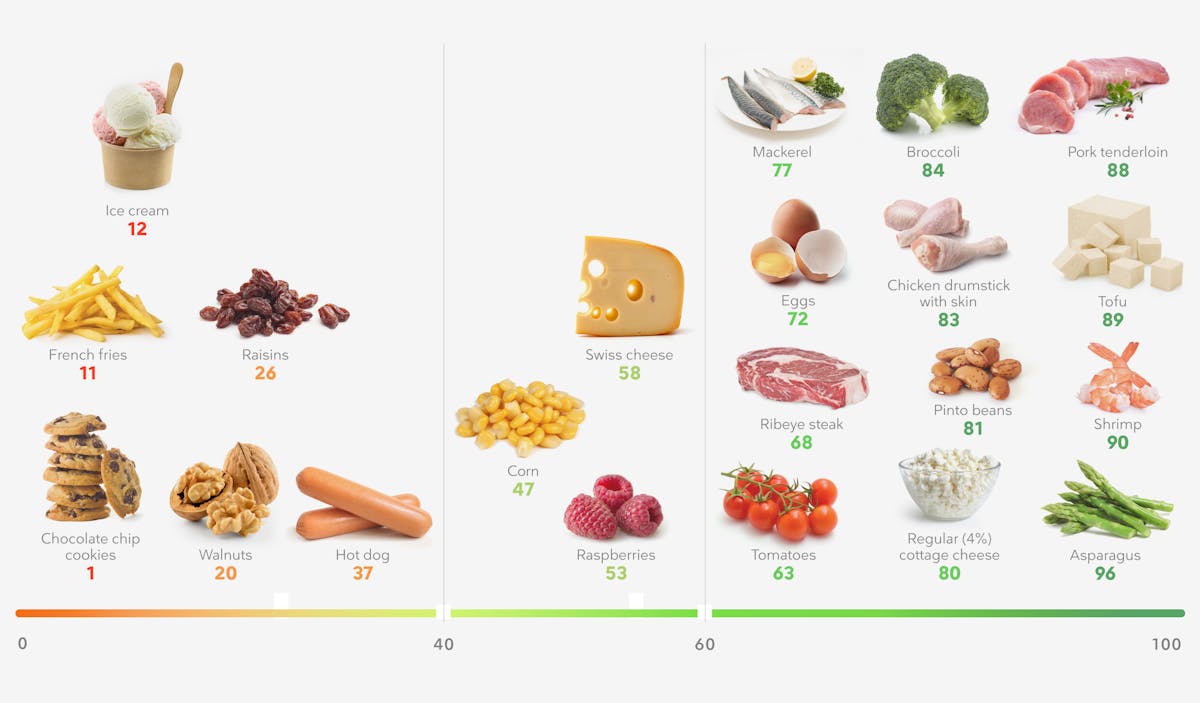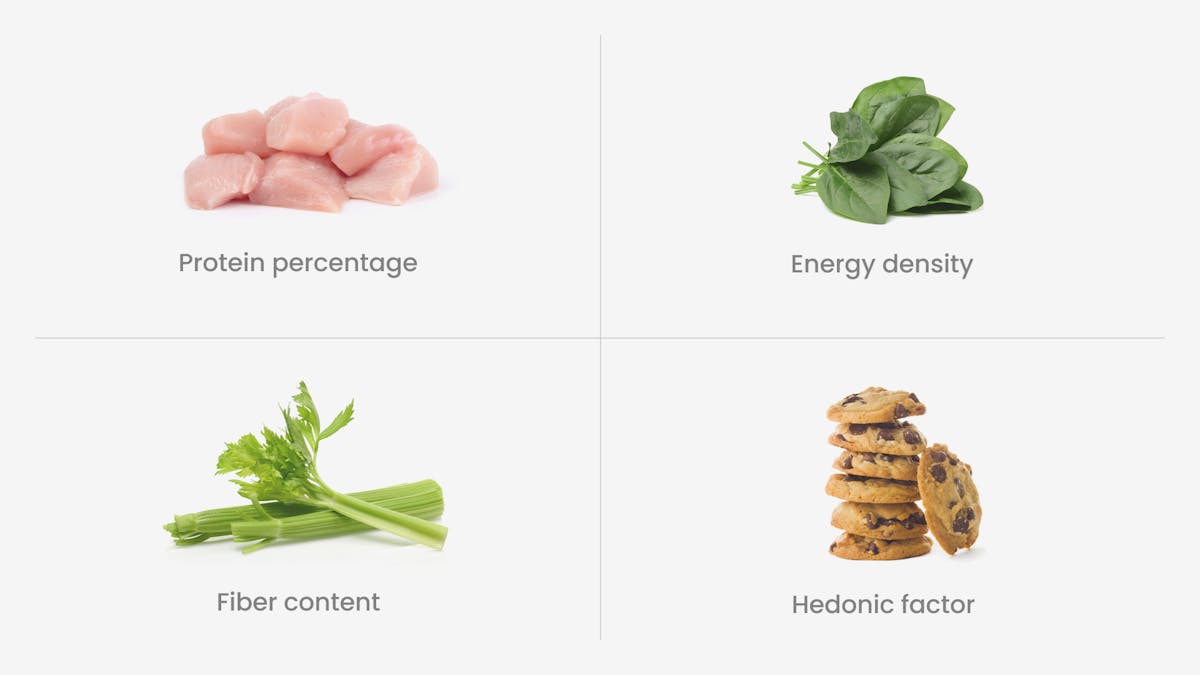High-satiety dairy: the best options
Evidence based
Are dairy foods good for losing weight? It depends. Some dairy products provide a lot of satiety without adding many calories, meaning they can help you feel fuller and more satisfied while you lose excess body fat. Other dairy options aren’t as effective for fat loss, especially when consumed in large amounts.
This guide provides satiety scores for all types of dairy products, so you’ll know which ones can help you achieve your health goals. Good news: many dairy products are a good fit for a higher-satiety eating approach. Take a look!
What are high-satiety foods?
High-satiety foods help you feel as full as possible for the fewest number of calories. In other words, they provide high satiety per calorie.
As part of our higher-satiety eating approach, we assign all foods a satiety score from 0 to 100. The score is calculated using four factors related to satiety:
- Protein percentage: the percentage of a food’s calories that come from protein rather than fat and carbs. Protein is an essential nutrient that reduces hunger and helps you feel full. For this reason, protein percentage is given the most weight when calculating the satiety score.
- Energy density: the calories (or energy) in a specific weight of food, such as 100 grams (3.5 ounces). Studies show that eating less-dense foods leads to eating less.
- Fiber: the non-digestible portion of carbs that can stretch your stomach and help you feel full.
- Hedonic factor: a score reduction for the decadent foods that can drive overeating.
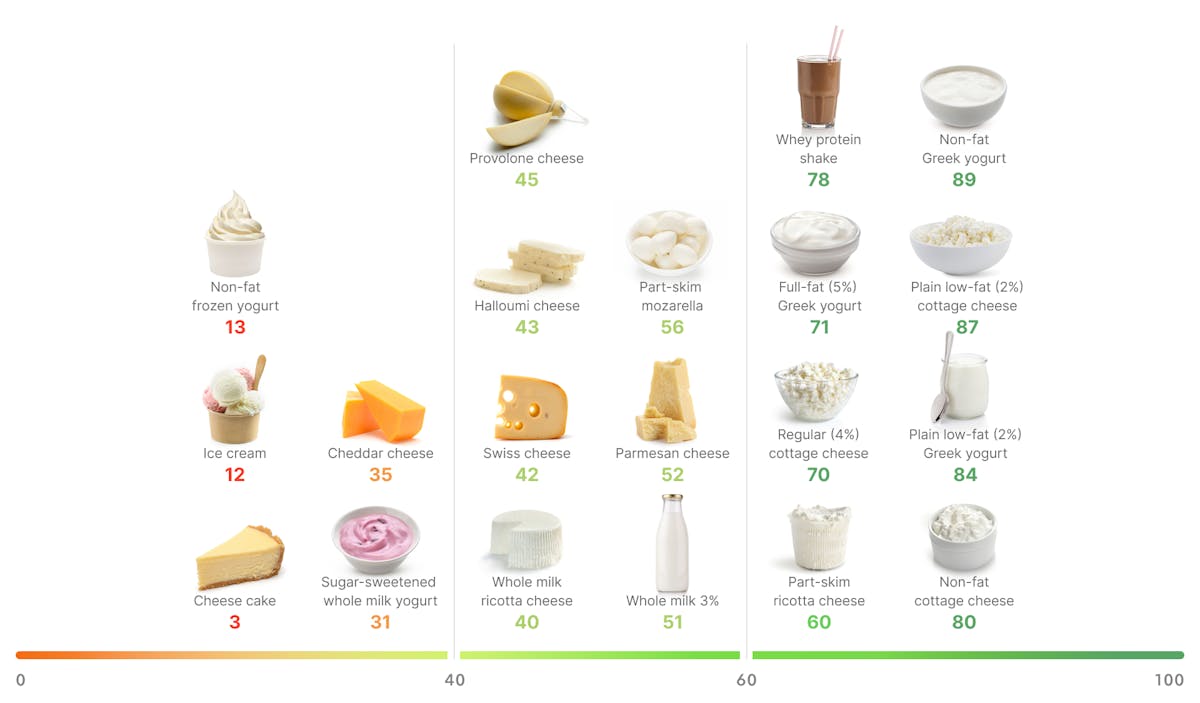



If you want to lose weight, aim to eat a generous portion of high-satiety food at each meal. Foods that score 60 or above are considered high-satiety foods. And many dairy products have scores in this range.
However, you don’t need to limit yourself to only high-satiety dairy foods. For instance, you can combine high-satiety dairy products like plain Greek yogurt with smaller amounts of lower-satiety foods like nuts and seeds. Similarly, you can use lower-scoring dairy fats to cook high-satiety meat, vegetables, and other foods. Or, you can add some butter or cream to your food at the table.
Combining high-satiety foods with lower-satiety ones can make your meal more enjoyable, and you’ll still end up with an overall satiety score that’s well above 50. Think of 50 as the minimum combined score to shoot for to promote healthy, sustainable weight loss without going hungry. Additionally, eat as much as you need to feel comfortably full, not stuffed.
Want to delve deeper into the world of satiety? Head over to our sister brand Hava to explore the free version of the satiety calculator.
More high-satiety guides:
High-satiety dairy foods
Yogurt
Creamy, tangy yogurt is high in protein and other important nutrients like calcium and magnesium. It’s made by treating milk with bacteria that ferment most of the lactose (milk sugar) into lactic acid, which lowers its carb content.
Straining yogurt removes even more lactose, which results in a higher protein concentration. Strained yogurt is commonly known as Greek yogurt or skyr (a traditional Icelandic dairy food).
As you can see below, all types of plain yogurt have high satiety scores. So choose the kinds you like best that fit your dietary approach. For instance, if you follow a low carb or high protein way of eating, Greek yogurt or skyr is your best option.
We provide standard information for different types of yogurt. But if you want to know a yogurt’s protein content, it’s a good idea to check labels, because the amount of protein can vary among different brands. Look for the higher protein amounts. Also, watch out for added sugar and starch — even in “plain” varieties — which can lower a yogurt’s satiety score.
Enjoy plain yogurt on its own or paired with berries or other fruits. You can also use it as a high-satiety alternative to sour cream.
Here are the satiety scores and grams of protein and carbs per 5-ounce (170-gram) serving of yogurt (about three-quarters of a cup):
88
Plain nonfat Greek yogurt or skyr
18 grams of protein and
5 grams of carbs per serving
83
Plain low fat (2%) Greek yogurt or skyr
17 grams of protein and
5 grams of carbs per serving
89
Plain nonfat yogurt
8 grams of protein and
11 grams of carbs per serving
71
Plain full fat (4%) Greek yogurt or skyr
16 grams of protein and
5 grams of carbs per serving
67
Plain low fat (2%) yogurt
8 grams of protein and
11 grams of carbs per serving
Cottage cheese
If you’re looking for a tasty, filling dairy food to enjoy at a meal or eat as a snack, consider cottage cheese.
It’s made by adding acidic bacteria to milk, which creates curds that give cottage cheese its familiar lumpy appearance.
If you’re a cottage cheese fan, you’ll be happy to hear that all types of this dairy product have impressive satiety scores. Plus, cottage cheese provides a bit more protein than an equal amount of Greek yogurt. (Of course, if you prefer Greek yogurt, feel free to eat it instead of cottage cheese.)
In addition to eating cottage cheese alone, try adding some cinnamon and optional low-carb sweetener for an easy, high-satiety dessert. Or mix it with herbs or spices to make a satisfying dip for veggies. Or make our delicious protein pancakes featuring cottage cheese. Here are the satiety scores and grams of protein and carbs per 4-ounce (113-gram) serving of cottage cheese (about one-half cup):
80
Nonfat (0%) cottage cheese
13 grams of protein and
5 grams of carbs per serving
80
Low fat (1%) cottage cheese
13 grams of protein and
5 grams of carbs per serving
74
Low fat (2%) cottage cheese
13 grams of protein and
5 grams of carbs per serving
70
Regular (4%) cottage cheese
13 grams of protein and
5 grams of carbs per serving
Part-skim and low fat cheese
Like many other dairy products, cheese is delicious and high in calcium. However, because most cheeses have much less protein than fat, they have only moderate satiety scores in the 40s or 50s.
Fortunately, reduced fat and part-skim cheeses are high-satiety foods — and some of them actually taste pretty good! So if you like them, feel free to add them to your go-to list of dairy foods.
Plus, there’s no need to avoid the higher fat cheeses that you love. Just keep portion sizes small. (You can read more about higher fat cheese in the moderate-satiety dairy foods section.)
Here are the satiety scores and grams of protein and carbs per 2-ounce (60-gram) serving of cheese (about two slices, or one-quarter cup):
45
Reduced fat cheeses
(Swiss, cheddar, provolone)
About 15 grams of protein and 1 to 2 grams of carbs per serving
56
Part-skim mozzarella
14 grams of protein and
less than 1 gram of carbs per serving
60
Part-skim ricotta
7 grams of protein and
3 grams of carbs per serving
64
Parmesan
20 grams of protein and
less than 2 grams of carbs per serving
54
Provolone
15 grams of protein and
less than 1 gram of carbs per serving
47
Whole milk mozzarella
14 grams of protein and
less than 2 gram of carbs per serving
Low fat milk
Milk is the origin of cheese, yogurt, and all other dairy products. However, unlike fermented dairy foods, most milk is high in lactose (milk sugar), which lowers its satiety score.
The exception is ultra-filtered milk, which removes most of the lactose, resulting in a higher protein, lower carb product with an excellent satiety score. If your diet allows more carbs, nonfat and low fat (1%) milks also rank well on the satiety scale because their protein percentages are fairly high and their energy densities are low since they contain a lot of water.
Here are the satiety scores and grams of protein and carbs per 8-ounce (240-ml) serving of milk (one cup):
70
Ultra-filtered high protein, low fat (1%) milk
13 grams of protein and
6 grams of carbs per serving
61
Ultra-filtered high protein, reduced fat (2%) milk
13 grams of protein and
6 grams of carbs per serving
51
Nonfat milk
8 grams of protein and
12 grams of carbs per serving
49
Low fat (1%) milk or buttermilk
8 grams of protein and
12 grams of carbs per serving
Whey protein drinks
Whey is the protein-rich liquid remaining after milk has curdled during the process of making cheese. To make whey protein powder, whey is first filtered to remove most of its fat and carbs. Then, the concentrated protein is spray-dried into a powder.
Gram for gram, whey protein contains much more protein than other dairy products. It becomes a convenient, high-satiety protein option when it’s mixed with water or milk.
However, whey protein is a highly processed product. So although it’s OK to use it occasionally in smoothies and bread or dessert recipes, try to eat mainly minimally processed dairy foods instead.
Here are the satiety scores for 32 grams (approximately one scoop) of whey protein powder mixed with 8 ounces (240 ml) of liquid:
72
Whey protein
(unflavored or artificially sweetened) mixed with 1 cup of water
25 grams of protein, less than 1 gram of carbs
65
Whey protein with milk
(unflavored or artificially sweetened) mixed with 1 cup of fat milk
33 grams of protein, 12 grams of carbs
High-satiety dairy recipes
Try one of our tasty, filling recipes featuring high-satiety dairy foods, below:
Moderate-satiety dairy foods
Moderate-satiety foods have satiety scores between 40 and 59. Include them in small to modest amounts, based on your eating preferences.
Cheese
Yes, cheese is delicious and low in carbs. But because it’s much higher in fat than protein, it has a high energy density, which lowers its satiety score. Plus, it can be easy to overeat.
You can still enjoy high fat cheese in smaller doses, though. Aim for a daily intake of up to about 2 ounces (60 grams) of cheese if you’re trying to lose weight. Use cheese in recipes, shred it and sprinkle over a protein-based salad, or have a small wedge with vegetables or berries as a snack or dessert.
Here are the satiety scores and grams of protein and carbs per 2-ounce (60-gram) serving of cheese (about two slices or one-quarter cup):
42
Swiss
16 grams of protein and less than 1 gram of carbs per serving
43
Halloumi
14 grams of protein and less than 1 gram of carbs per serving
40
Brie or Camembert
12 grams of protein and less than 1 gram of carbs per serving
37
Blue, Roquefort
12 grams of protein and less than 1 gram of carbs per serving
41
Goat cheese
12 grams of protein and less than 1 gram of carbs per serving
35
Cheddar
14 grams of protein and less than 1 gram of carbs per serving
36
Feta
8 grams of protein and less than 2 grams of carbs per serving
40
Whole-milk ricotta
5 grams of protein and 5 grams of carbs per serving
High-satiety recipes featuring cheese
If you’re a cheese lover, these recipes are for you! By combining cheese with high-satiety protein foods, we’ve created delicious meals that have great satiety scores.
Milk
Since milk options with higher fat content are more energy-dense than nonfat and low fat varieties, they rank lower on the satiety scale. So it’s best to include them in small amounts in coffee or tea instead of drinking them as beverages.
Here are the satiety scores and grams of protein and carbs per 8-ounce (240-ml) serving of milk (one cup):
49
Reduced fat (2%) milk and buttermilk
8 grams of protein and less than 12 grams of carbs per serving
51
Whole (3.5%) milk
8 grams of protein and less than 12 gram of carbs per serving
Low-satiety dairy foods
Added dairy fats
Butter and other dairy fats have very low satiety scores because they contain almost no protein or other nutrients, yet are high in calories. However, don’t let those low numbers give you the idea that you should avoid them. You can — and should — include them in a higher-satiety eating plan.
It’s best to combine small amounts of these fats with foods or beverages that have moderate to high satiety scores. Adding some cream to your coffee or tea, and cooking vegetables and leaner meats and seafood in butter, can improve your food’s flavor and make eating more enjoyable.
How much dairy fat should you add? If you want to lose weight, use up to 1 tablespoon of fat to cook your meals or add to your food or beverages at the table.
Here are the satiety scores and grams of protein and carbs per 1 tablespoon serving of dairy fats:
14
Cream cheese
0.9 grams of protein and less than 0.8 gram of carbs per serving
38
Heavy cream
12 grams of protein and less than 1 gram of carbs per serving
21
Sour cream
0.3 grams of protein and less than 0.6 gram of carbs per serving
10
Butter
0.9 grams of protein and less than 0.8 gram of carbs per serving
15
Ghee
0 grams of protein and less than 1 gram of carbs per serving
Sweetened dairy products
Combine a dairy product with sugar and flavorings, and the result is a delicious treat with lots of calories and a low satiety score. Plus, high fat, high carb dairy desserts taste so good that they may be tough to stop eating.
Minimize the dairy foods on this list, or ideally avoid them altogether to lose weight in a healthy, sustainable way.
Here are the satiety scores and grams of protein and carbs for one serving of sweetened dairy products (Note: protein and carb amounts will vary among different types and brands.):
13
Nonfat frozen yogurt
0.9 grams of protein and less than 0.8 gram of carbs per serving
33
Sugar-sweetened whole milk yogurt
12 grams of protein and less than 1 gram of carbs per serving
16
Milkshake
0.3 grams of protein and less than 0.6 gram of carbs per serving
3
Cheesecake
0.9 grams of protein and less than 0.8 gram of carbs per serving
12
Ice cream
0 grams of protein and less than 1 gram of carbs per serving
Summary
Dairy foods can play a role in a higher-satiety eating approach. The key is choosing the right amounts of different types.
Eat your fill of high-satiety dairy products like Greek yogurt. Enjoy most types of cheese in modest amounts. Add a small amount of butter or cream for cooking and to improve your food’s flavor. Avoid sweetened dairy products, especially those high in fat.
In short, include a variety of tasty, nutritious dairy foods in your higher-satiety lifestyle.
In a 12-day randomized crossover study, people were allowed to eat as much as they wanted on a high protein, normal protein, and low protein diet. During the high protein portion of the trial, they consumed 500-550 fewer calories than they did during the normal protein and low protein portions of the trial:
The American Journal of Clinical Nutrition 2013: Protein leverage affects energy intake of high-protein diets in humans [randomized trial; moderate evidence]
A systematic review of randomized controlled trials found that higher protein diets tend to promote weight loss, due in part to reducing hunger and increasing satiety:
Journal of the American College of Nutrition 2004: The effects of high protein diets on thermogenesis, satiety and weight loss: a critical review [systematic review of randomized trials; strong evidence]
In short-term trials, women ended up eating fewer calories when they were allowed as much food as they wanted at low-energy-density meals compared to high-energy-density meals – even though they reported having similar hunger and fullness levels after all meals:
The American Journal of Clinical Nutrition 1998: Energy density of foods affects energy intake in normal-weight women [randomized trial; moderate evidence]
The American Journal of Clinical Nutrition 2001: Energy density of foods affects energy intake across multiple levels of fat content in lean and obese women [randomized trial; moderate evidence]
In a one-year trial, women who cut back on fat and increased the amount of low-energy-density foods in their diet lost more weight than women who simply cut back on fat, even though both groups were allowed to eat as much as they wanted:
The American Journal of Clinical Nutrition 2007: Dietary energy density in the treatment of obesity: a year-long trial comparing 2 weight-loss diets [randomized trial; moderate evidence]
In a small study, people who ate a large portion of spinach at lunch felt significantly full, which researchers attributed in part to the increased fiber in the meal:
International Journal of Food Sciences and Nutrition 1995: Satiety effects of spinach in mixed meals: comparison with other vegetables [non-controlled study; weak evidence]
In a study conducted in an inpatient hospital ward, 20 people ate a non-calorie-restricted ultra-processed diet and non-calorie-restricted minimally processed diet for two weeks each, in random order. The participants ate an average of 500 calories more per day on the ultra-processed diet — entirely from carbohydrates and fats — and gained 2 pounds (0.9 kilos), on average:
Cell Metabolism 2019: Ultra-processed diets cause excess calorie intake and weight gain: An inpatient randomized controlled trial of ad libitum food intake [randomized trial; moderate evidence]
PLoS One 2015: Which foods may be addictive? The roles of processing, fat content, and glycemic load [non-randomized trial; weak evidence]
Advances in Pharmacological Sciences 2016: The influence of palatable diets in reward system activation: a mini review [overview article; ungraded]




